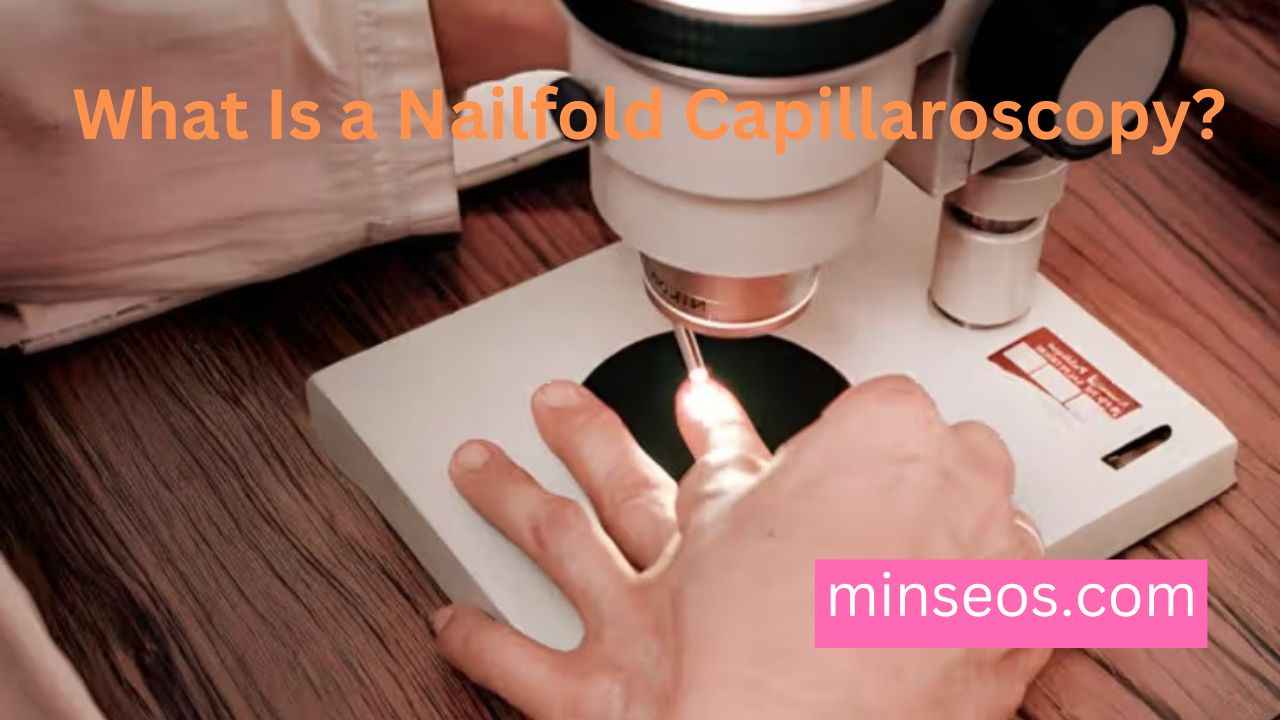A noninvasive procedure called nailfold capillaroscopy is performed to check for alterations in the tiny blood veins at the base of your fingernails. It is mostly used to recognize the characteristics of certain autoimmune diseases.
A frequent test for disorders that alter the tiny blood vessels throughout your body is a nailfold capillaroscopy, often known as a nail blood vessel test. In general, the test is widely accessible, noninvasive, and reasonably priced.
If a doctor believes you have an autoimmune disease or connective tissue disease that affects your capillaries, which are tiny blood vessels, you might need to have a nailfold capillaroscopy. Scientists are still investigating whether it could also help identify alterations brought on by certain non-autoimmune diseases, such as type 2 diabetes.
Continue reading to find out more about nailfold capillaroscopy, including the conditions it is used to screen for, the procedure, and the significance of the findings.
Nailfold capillaroscopy test purpose
An established method for evaluating your microcirculation—the flow of blood through tiny blood vessels called capillaries—is nailfold capillaroscopy. It may evaluate a number of your nailfold capillary characteristics, such as:
- capillary density
- blood flow rate
- blood vessel abnormalities
Changes to your capillaries can occasionally be seen with the unaided eye, but nailfold capillaroscopy makes it easier for medical professionals to see these changes by using magnification.
Nowadays, rheumatologists—physicians who specialize in autoimmune diseases—use nailfold capillaroscopy as a routine procedure. Giant capillaries and bleeding are two characteristics of scleroderma that help distinguish systemic sclerosis from Raynaud’s phenomenon.
To check for autoantibodies, doctors frequently combine it with a blood test. Your immune system produces chemicals called autoantibodies, which instruct white blood cells to unintentionally target healthy tissue within your body.
What are systemic sclerosis and Raynaud’s phenomenon?
The chronic inflammatory connective tissue disease known as systemic sclerosis, or scleroderma, results in degenerative changes in your:
- skin
- joints
- internal organs
There is a significant chance of serious problems. Survival rates have grown as a result of therapy advancements. Up to 80% of people survive for five years now.
The condition known as Raynaud’s phenomenon is typified by capillary spasms that cause your fingers to turn pale. Although it is widespread and normally doesn’t create difficulties, doctors frequently want to be sure that there isn’t any underlying condition causing the symptoms.
What other autoimmune diseases can nailfold capillaroscopy help diagnose?
Additionally, nailfold capillaroscopy can be utilized to identify conditions like connective tissue disease and autoimmune illnesses that impact blood flow through your tiny blood vessels.
- systemic lupus erythematosus
- inflammatory myositis
- rheumatoid arthritis
Are there any side effects or risks to a nailfold capillaroscopy?
Nailfold capillaroscopy is a risk-free, noninvasive imaging procedure. The test visualizes the capillaries in your nail using a light and magnification. It offers magnification up to 500 times and more than 50 times.
Oil applied on your nails to aid with the imaging has a very slim risk of causing a reaction.
Nailfold capillaroscopy test procedure
Nailfold capillaroscopy doesn’t require any special preparation. Typically, the test is conducted at a physician’s office.
- The process and the rationale behind the test will be explained by your physician or nurse.
- Your hand will be placed on a desk or other level surface. At the base of your fingers, they could apply an oil drop.
- Next, using a tiny instrument with a light and a digital microscope, your nurse or physician will examine the base of your nails. It could have a computer attached to it.
- The picture will show up on a computer screen so the doctor can check for unusual changes.
Cell phones are compatible with some of the more recent gadgets that have been created.
How effective is nailfold capillaroscopy
It is well-recognized that nailfold capillaroscopy can accurately diagnose rheumatic diseases, including systemic sclerosis. Further research is needed to determine its usefulness for non-autoimmune diseases.
Recent research has shown promise in identifying other conditions, such as:
- diabetes
- glaucoma
- essential hypertension
- psoriasis
- cardiovascular disease
- chronic kidney disease
Nailfold capillaroscopy results
Your doctor can use the test findings to check for capillary alterations that could indicate a particular condition. A medical expert with specialized training in these images must interpret the data. There may be a significant chance of misunderstanding even when an expert interprets it.
Your physician will search for indications of blood vessel issues, including:
- swelling
- leaking
- unusual shapes
Nailfold capillaroscopy price
Particularly when contrasted with other imaging modalities, nailfold capillaroscopy is a reasonably priced test. The test itself may cost less than $100 in part or in full. If the test is judged medically necessary, your insurance company may cover all or part of it.
Takeaway
A technique called nailfold capillaroscopy can be used to detect autoimmune diseases that alter your blood vessels. It is frequently used to distinguish Raynaud’s phenomenon from systemic sclerosis, an autoimmune disease.
To diagnose autoimmune diseases, your doctor could use nailfold capillaroscopy in conjunction with blood testing to check for autoantibodies.




Leave a Reply